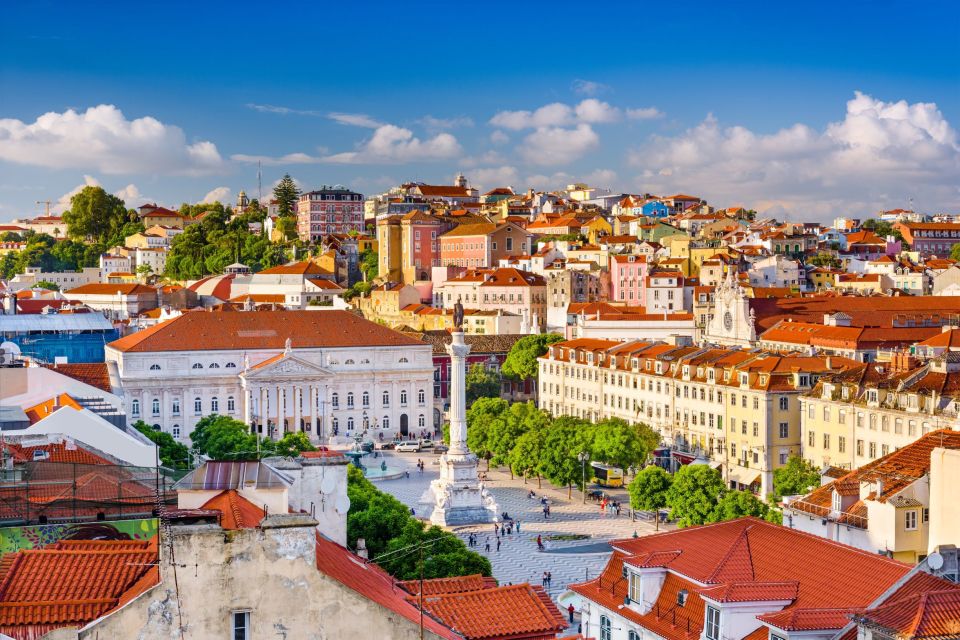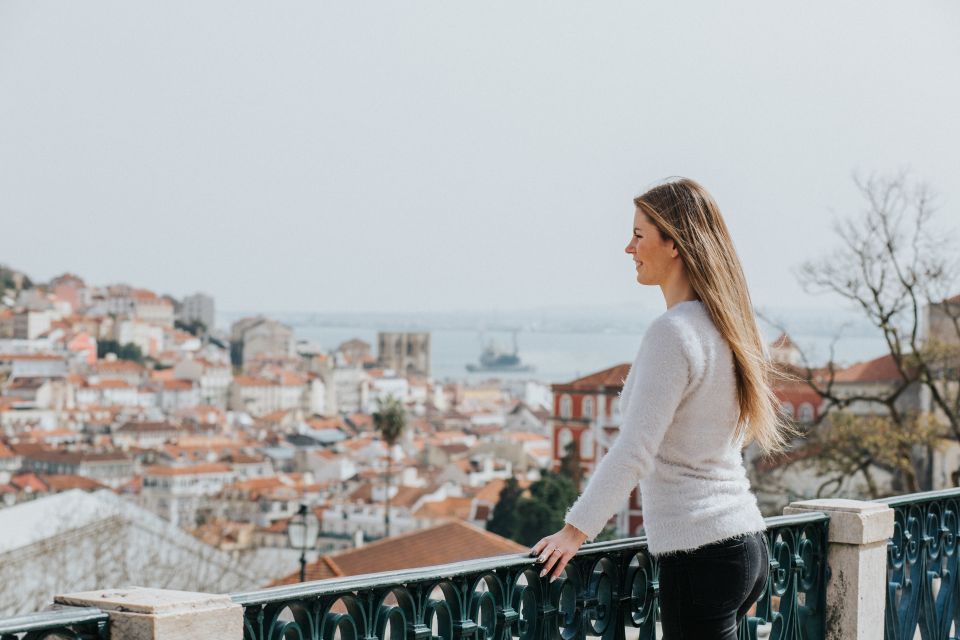Lisbon’s dark history has long captivated travelers. The Earthquake Walking Tour offers a unique chance to uncover the city’s resilience in the face of a devastating natural disaster. Guided by knowledgeable experts, participants can explore the impact of the 1755 earthquake and explore the remarkable reconstruction efforts that transformed Lisbon into the vibrant metropolis it is today. From discovering hidden pockets of the city that withstood the destruction to scaling the iconic Rua Augusta Arch, this tour promises an immersive journey through Lisbon’s past – one that will leave you with a deeper appreciation for the city’s enduring spirit.
Key Points

-
This 3-hour walking tour in Lisbon explores the city’s history before and after the devastating 1755 earthquake, providing insights into the city’s resilience and rebuilding efforts.
-
The tour is led by knowledgeable guides available in multiple languages and covers key landmarks that withstood the earthquake, as well as the immense effort required for Lisbon’s reconstruction.
-
Participants can customize the tour experience to their interests and have the opportunity to climb the iconic Rua Augusta Arch (arch admission not included).
-
The tour is wheelchair accessible and can be booked online, with the option to pay later, making it accessible to solo travelers and private groups.
-
The meeting point for the tour is at Praça do Comércio, a central and easily identifiable location with ample space for the group to assemble.
It's also worth checking out some other tours and experiences nearby.
Activity Details

This earthquake walking tour in Lisbon allows visitors to discover the city before and after the devastating 1755 earthquake. The tour lasts 3 hours and is led by live guides available in Spanish, English, French, German, and Italian. The tour is wheelchair accessible, and private group options are available.
The tour highlights the parts of Lisbon that resisted destruction and delves into the immense effort required for the city’s reconstruction project. Participants will learn how the people of Lisbon adapted to life after this catastrophic disaster.
The tour includes a climb to the famous Rua Augusta Arch, although the arch ticket isn’t included in the tour price.
Tour Highlights

Visitors on this earthquake walking tour in Lisbon can learn about one of the biggest earthquakes in European history – the devastating 1755 event.
They’ll discover which parts of the city resisted destruction and gain an understanding of the immense effort required for Lisbon’s reconstruction project.
On top of that, you will learn how the people of Lisbon adapted to life after this catastrophic disaster.
The tour highlights the impact of this earthquake and the resilience of the city and its inhabitants.
Guests will come away with a deeper appreciation for Lisbon’s history and its ability to overcome natural disasters.
The knowledgeable guide will bring this fascinating story to life during the 3-hour experience.
Inclusions
The tour includes a dedicated guide who’ll lead participants through the city’s historic sites and share insights about the 1755 earthquake. Visitors can also opt to climb to the top of the Rua Augusta Arch, though the arch admission ticket isn’t included in the tour price.
The tour’s inclusions are designed to provide a comprehensive and enriching experience for guests:
- Knowledgeable guide to provide historical context and local expertise
- Opportunity to explore the city’s resilience and rebuilding efforts
- Access to key landmarks that withstood the devastating earthquake
- Flexibility to customize the tour experience to individual interests
With these carefully curated inclusions, the Lisbon Earthquake Walking Tour offers a unique and immersive way to discover the city’s past and present.
Pricing and Booking
Priced starting from $76.29 per person, the Lisbon Earthquake Walking Tour can be booked online, with the option to pay later. Offering flexibility, guests can reserve their spot in advance and settle the payment closer to the tour date.
The tour covers 3 hours of guided exploration, delving into the history of Lisbon before and after the devastating 1755 earthquake. With live guides available in multiple languages, including Spanish, English, French, German, and Italian, the tour is accessible to a wide range of visitors.
Whether traveling solo or as part of a private group, this immersive experience provides an opportunity to understand the resilience and reconstruction efforts that shaped Lisbon’s post-earthquake landscape.
Meeting Point
The Lisbon Earthquake Walking Tour conveniently starts at Praça do Comércio, where participants gather in front of the iconic Rua Augusta Arch. This central location makes it easy for visitors to find the meeting point and begin their exploration of Lisbon’s history.
The open plaza provides ample space for the group to assemble before embarking on the guided tour.
Participants can arrive a few minutes early to take in the impressive architecture and lively atmosphere of Praça do Comércio.
It’s situated in the heart of the city, offering easy access from nearby public transportation.
The Rua Augusta Arch serves as a prominent landmark, ensuring the meeting spot is easy to identify.
1755 Earthquake Overview
The 1755 Lisbon earthquake was one of the most devastating natural disasters to strike Europe, with its immense magnitude and far-reaching impact. Measuring an estimated 8.5-9.0 on the Richter scale, the quake devastated the Portuguese capital, triggering a massive tsunami and subsequent fires that destroyed much of the city. Thousands perished, and the economic and social consequences were severe.
However, the earthquake also spurred a remarkable reconstruction effort led by the Marquis of Pombal, who oversaw the redesign and rebuilding of Lisbon into a more organized, fireproof city. This walking tour offers a unique opportunity to explore the legacy of this pivotal event and understand how it shaped the modern city of Lisbon.
Lisbon’s Resilience
While the 1755 earthquake devastated much of Lisbon, certain parts of the city remarkably resisted the destruction, offering a glimpse into the resilience that would shape the city’s future. The Alfama district, with its winding cobblestone streets and sturdy stone buildings, withstood the quake’s fury, allowing its residents to carry on with their lives.
Plus, the Baixa neighborhood, the commercial heart of the city, managed to preserve some of its original structures, serving as a foundation for the subsequent rebuilding efforts.
The Rossio Square, a bustling public plaza, remained largely intact, becoming a symbol of Lisbon’s determination to rise from the ashes.
The Jerónimos Monastery, a UNESCO World Heritage site, stood firm, a testament to the city’s enduring spirit.
These pockets of resilience would inspire the ambitious reconstruction project that would transform Lisbon into a modern, earthquake-resistant city.
Reconstruction Efforts
Following the earthquake’s destruction, Lisbon embarked on an ambitious reconstruction project to transform the city into a modern, earthquake-resistant urban center.
Informed by the lessons learned from the resilient neighborhoods that had withstood the disaster, the reconstruction efforts focused on rebuilding the city with new architectural and engineering techniques to ensure greater structural integrity.
The project was a massive undertaking, involving the redesign of the city’s layout and the implementation of strict building codes.
New materials and construction methods were employed, including the use of cast iron and reinforced concrete.
The goal was to create a Lisbon that could better withstand future seismic events, making the city more resilient and safer for its inhabitants.
Here's a few more nearby tours and experiences we think you'll like.
Frequently Asked Questions
Is the Tour Suitable for Children?
The tour can accommodate children, as it’s wheelchair accessible. However, the duration of 3 hours may be too long for some youngsters. Parents should consider their child’s attention span and interests when deciding if this tour is suitable.
Can the Tour Be Customized for Specific Interests?
Yes, the tour can likely be customized to accommodate specific interests. The private group option allows for flexibility to focus on areas of most interest to the group, such as architecture, history, or personal stories.
What Is the Cancellation and Refund Policy?
The tour operator offers flexible cancellation policies, allowing customers to cancel or modify their bookings up to 24 hours before the tour, with full refunds available if cancellations are made within this timeframe.
Are There Any Discounts Available for Students or Seniors?
While the tour doesn’t explicitly offer student or senior discounts, travelers may want to inquire about any available discounts when booking. The activity’s flexible pricing and payment options could allow for potential savings.
Can the Tour Be Booked in Multiple Languages on the Same Day?
Yes, the tour can be booked in multiple languages on the same day. The tour guide is available in Spanish, English, French, German, and Italian, allowing groups with different language needs to join the same tour.
Not for you? Here's more of our most recent tour reviews happening neaby
- Sintra and Cascais Private Full-day Tour
- Sintra Palaces and Cascais Magical Experience Private Tour
- Sintra, Cascais and Estoril Coast With Tickets From Lisbon
- Lisbon: Hop-On Hop-Off Tour Bus With Three Routes Including Tram
- Shore Excursion Lisbon – Half-day Exclusive Tuk Tour
- The Portuguese Food Tour – Local Foods and Drinks in Lisbon
- Sintra and Cascais Full Day Private Tour From Lisbon
- Private Discover Lisbon With a Photographer – Night Edition
- 5H Walking + TukTuk Tour “Boots & Wheels”
- Alfama and the Castle of Saint George Skip the Line Tour
- From Lisbon: Mystical & Romantic Sintra Small Group Tour
- City of Neighborhoods Tour II by Tuk Tuk
- Private Sintra Tour From Lisbon
- Private Tour to Lisbon Full Day
- Fatima, Batalha, Nazaré & Óbidos Private Luxury Tour
Recap
The Lisbon: Earthquake Walking Tour offers an immersive exploration of the city’s resilience in the face of the devastating 1755 earthquake.
Led by knowledgeable experts, the tour provides in-depth insights into Lisbon’s remarkable reconstruction efforts and the adaptability of its people.
Participants will discover the city’s historical landmarks, climb the iconic Rua Augusta Arch, and gain a deeper appreciation for Lisbon’s remarkable ability to overcome such a significant natural disaster.
